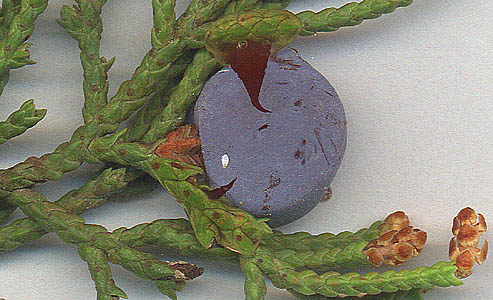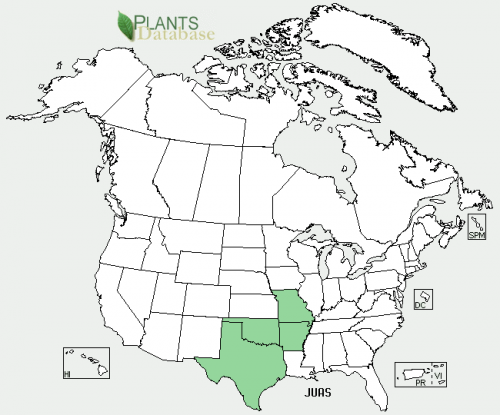|
|
 |
 |
 |



Ashe Juniper
(Juniperus ashei)
Species Distribution

Height:
The avergae height of an Ashe Juniper is 10 meters.
Leaf and Bark Type:
This evergreen tree has scale-like leaves that are 1/8th" to 1/4th" long and are on round shoots. and shaggy bark. The bark of the Ashe Juniper peels off in long, thin strips, which are used by birds for nesting material.
Where does it grow and in what conditions:
This tree grows well in dry soils that are well-drained and rocky, such as limestone-based, sandy, sandy loam, medium loam, clay loam and clay. The Ashe Juniper is found in Texas, Oklahoma, Arkansas and Missouri. It should be grown in full sun.
Pollinators:
Moths and butterflies pollinate this type of tree.
Flowers:
The flowers are small insignificant, unisexual and dioecious.
Fruits:
This tree produces small round blue berry like fruit.
Uses
This tree is very useful for many species of birds that eat the fruit that it produces and nests in the shaggy bark. The trunk of the tree is commonly used for fenceposts, crossties, poles and fuel.
GPS location
Submitted by Clifton and Yarbrough
Citations:
http://www.wildflower.org/plants/result.php?id_plant=JUAS
https://paulsellers.com/2011/09/know-your-wood-27-ashe-juniper/
hort.ifas.ufl.edu/database/documents/pdf/tree_fact_sheets/junasha.pdf
http://www.biosci.utexas.edu/prc/digflora/juas/cedar-monoec2.JPG
|
|
|
 |
|
 |
|
|

